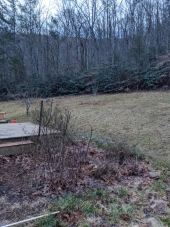








'Theoretically this level of creeping Orwellian dynamics should ramp up our awareness, but what happens instead is that each alert becomes less and less effective because we're incredibly stupid.' - Jerry Holkins











Permaculture and Homestead Blogging on the Traditional Catholic Homestead in Idaho! Jump to popular topics here: Propagating Morels!, Continuous Brew Kombucha!, and The Perfect Homestead Cow!





I have the opportunity to bid on project located on a nice forested slope (~10% slope) located below a forthcoming subdivision installation that would involve lots of grading and erosion. I am pitching this as a short term environmental protection project that could be converted into a unique built environment feature that the future neighborhood could utilize, (i.e walking trail, forest farming, etc).
List of Bryant RedHawk's Epic Soil Series Threads We love visitors, that's why we live in a secluded cabin deep in the woods. "Buzzard's Roost (Asnikiye Heca) Farm." Promoting permaculture to save our planet.

|
The time is always right to do what is right. -Martin Luther King Jr. / tiny ad
turnkey permaculture paradise for zero monies
https://permies.com/t/267198/turnkey-permaculture-paradise-monies
|



